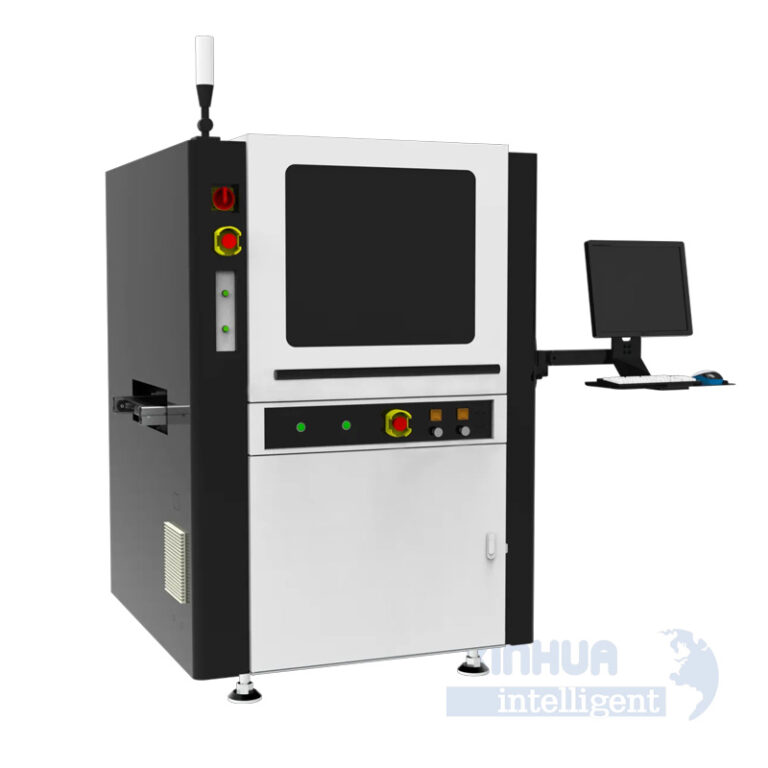
The Role of Glue Dispensing Valves in Modern Manufacturing
Glue dispensing valves play a crucial role in the modern manufacturing landscape, ensuring precise and consistent application of adhesives across various industries. These valves are designed to control the flow of glue with high accuracy, minimizing waste and enhancing product quality. As demand for automation and precision continues to grow, understanding the challenges associated with glue dispensing, the technical solutions available, and their real-world applications becomes increasingly important. This article delves into these aspects while concluding with a call-to-action highlighting Xinhua Intelligent as a reliable partner in this domain.
Common Pain Points or Challenges in Glue Dispensing
In the realm of adhesive application, several common pain points can hinder optimal performance and efficiency. One significant challenge is achieving consistent glue deposition. Variability in glue thickness or pattern can lead to subpar bonding, affecting the final product’s integrity. This inconsistency often stems from factors such as pressure fluctuations within the system, incorrect valve timing, or inadequate maintenance of the dispensing equipment.
Another prevalent issue is material compatibility. Not all glue dispensing valves are suited for every type of adhesive. Manufacturers must carefully select valves that can handle the specific viscosity, curing properties, and temperature requirements of the glue they intend to use. Failure to do so can result in clogging, improper curing, or damage to the materials being bonded.
Furthermore, maintaining clean and clog-free operation is a constant concern. Over time, residues can build up inside the valve, leading to blockages that disrupt the flow of adhesive. Regular cleaning and maintenance are essential but can be time-consuming and costly if not managed efficiently. Additionally, the environmental conditions in which the valve operates, such as humidity and temperature, can impact its performance and longevity.
Lastly, integrating glue dispensing valves into automated production lines poses its own set of challenges. Ensuring seamless communication between the valve and other components of the system requires robust software and hardware interfaces. Any misalignment or delay in synchronization can compromise the overall efficiency of the manufacturing process.
Practical and Technical Solutions for Glue Dispensing Challenges
Addressing the challenges in glue dispensing necessitates both practical and technical solutions. On the practical side, regular maintenance schedules should be established to prevent clogs and ensure smooth operation. This includes periodic disassembly, cleaning, and inspection of the valve components. Employing preventive maintenance strategies can significantly reduce downtime and extend the lifespan of the equipment.
From a technical standpoint, advancements in valve design have led to more sophisticated models capable of handling a wider range of adhesive types. For instance, pneumatic valves offer precise control over glue flow by utilizing air pressure to open and close the valve. These valves are particularly effective for low-viscosity adhesives. In contrast, auger-style dispensers are better suited for high-viscosity materials, using a rotating screw mechanism to push the adhesive through the nozzle.
Automation technologies have also revolutionized glue dispensing processes. Integrated sensors and feedback systems allow for real-time monitoring and adjustment of glue flow parameters. This ensures consistency and reduces the likelihood of human error. Moreover, programmable logic controllers (PLCs) enable precise timing and coordination of valve operations within an automated production line.
Material science innovations contribute to overcoming compatibility issues. New formulations of adhesives are continually being developed to work effectively with existing valve technologies. Understanding the chemical properties of both the adhesive and the valve material is critical in selecting the right combination for a given application.
Finally, environmental controls can mitigate the effects of external factors on valve performance. Implementing climate-controlled rooms or enclosures around the dispensing area helps maintain optimal operating conditions, reducing the risk of performance degradation due to temperature or humidity fluctuations.
Real-World Applications of Glue Dispensing Valves
The versatility of glue dispensing valves makes them indispensable across numerous industries. In electronics manufacturing, precision is paramount when applying adhesives to delicate components. Here, small-diameter nozzles and high-speed valves ensure accurate placement without damaging sensitive parts. This is crucial for assembling items like smartphones, circuit boards, and LED panels.
Automotive manufacturing heavily relies on glue dispensing valves for tasks ranging from windshield sealing to structural bonding in vehicle frames. Robust valves capable of handling large volumes of adhesive at varying pressures are essential in this sector. The ability to switch between different adhesive types quickly enhances flexibility on the production floor.
In packaging, glue dispensing valves facilitate efficient sealing of cartons and boxes. High-speed valves paired with advanced control systems ensure uniform application even at rapid production rates. This is vital for maintaining product integrity during transportation and storage.
Medical device manufacturing demands exceptional cleanliness and sterility. Specialized glue dispensing valves designed for aseptic environments meet these stringent requirements. They are used to assemble devices such as catheters, syringes, and diagnostic tools, where any contamination could jeopardize patient safety.

Construction and woodworking industries benefit from glue dispensing valves that can handle thick, viscous adhesives. These valves are employed in applications like laminating plywood or securing tiles, providing strong bonds that withstand heavy loads and environmental stresses.

Conclusion and Call to Action with Xinhua Intelligent
In conclusion, glue dispensing valves are integral to achieving high-quality adhesive applications across diverse industries. By addressing common challenges through practical maintenance practices and adopting advanced technical solutions, manufacturers can enhance productivity and product reliability. The real-world applications highlighted demonstrate the critical role these valves play in various sectors, underscoring their importance in modern manufacturing processes.

For those seeking a trusted partner in glue dispensing technology, Xinhua Intelligent stands out as a leader in innovation and reliability. With a comprehensive range of glue dispensing valves tailored to specific needs and expert support services, Xinhua Intelligent offers solutions that drive efficiency and precision in your operations. We invite you to explore our offerings and experience firsthand how Xinhua Intelligent can transform your adhesive application processes. Contact us today to discuss how we can assist in optimizing your manufacturing capabilities with cutting-edge glue dispensing technology.
